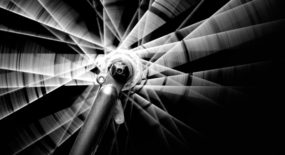
In creative working life there are a myriad of distractions that chip away, reduce and hinder your creativity.
Among these distractions, the major creativity-quashing culprits are Network Tools; e-mail, SMS, social media and the likes of Twitter, Facebook, Google, Instagram, Snapchat… part of a list that will only continue to get longer.
Creatives are ideas people. Your job is to come up with and implement new ideas on a daily, weekly, monthly basis and to do this you need some headspace.
Network Tools fill that headspace with constant activity. They fill your head with thoughts that consume your attention, send your mind in distracting directions and stop you from accessing flow.
John Long, Group Creative Director at Ogilvy wrote an article ‘Why iPhones are killing your creativity’ in Campaign Magazine. He astutely describes the level of distraction that happens when we seemingly ‘work’ on a project:
“You’re with your partner. The two of you are working on a brief for a new client. So naturally you pop open your laptop and do a quick scan of their recent ads, as well as their recent competitors’. A piece of music on one of them catches your ear so you look up the band. Wait, didn’t you see them at Governors Ball last year? Let’s check. Then you realize you’d worked with one of the directors your initial search turned up and—wow, she’s really taking off. Then your partner gets an email from account asking if you can attend a meeting in an hour, then you get a text cancelling said meeting. Then that GIF you posted on Facebook gets a “like” from someone you went to elementary school with (wonder where he lives now?) and a writer you used to work with at another agency, who you thought wasn’t very talented, re-tweets your joke about … well, you get the point.”
Long’s description is just a snap-shot of what continues to play-out during the working day. Even if you don’t work in a big agency and work from home, how much of your attention follows a similar online trajectory?
In all that distraction, where is the space for the kind of depth of thinking that gets you beyond what you already know and helps you tap into new ideas?
The problem Long sees is this.
Many of my clients tell me that one of the things they really struggle with is having a clear space in the day, that is devoid of distractions, to get on with some real creative work.
I myself found this a problem when I ran my London design company.
At first, I’d get most of my creative conceptual work done in the evenings because there were too many distractions during the day.
Then I progressed to mornings, coming in 3 hours earlier than my colleagues so I could have a good stretch of e-mail/phone-free time.
Finally, I found a way to blank-out distractions during the work day, by informing my fellow creatives that I was going to intensely focus for a few hours and wouldn’t be taking calls or answering emails. However, to do this in a busy open-plan studio, I had to wear noise-reducing headphones, with no music playing.
So the question is, how do you gain more mental space in a world that is geared-up to distract you?
The answer is two-part:
1) To understand how your headspace works – The psychological element.
2) To cultivate more ‘Deep Work’ – The environmental element.
In Cal Newport’s book ‘Deep Work – Rules for focused success in a distracted world’ he describes the term as professional activities performed in a state of distraction-free concentration that push your cognitive capabilities to their limit.
Newport’s book presents practical methods to cut out the distractions by changing your environmental situation and routine. His research on the subject delves into neuroscience, flow, methods of successful knowledge workers and his own personal journey into Deep Work.
If you’re fortunate, you may have already figured out environmental aids to help you ‘go deep’ – I still wear my noise-reducing headphones for stretches of intense focus, and because I understand the nature of my experience, I can now drop into deep states of flow very easily.
The environmental element helps you fast-track to the psychological element and to flow.
Even so, we ALL still have to contend with the endless Network Tools that try to rob us of our moment-to-moment attention and as Long says, are:
Turn off the e-mail, mute your phone, let clients and colleagues know you’re unavailable for ‘X’ amount of time and go deep. Just by doing this alone, your mind will start to settle down and regain some space.
While you’re in that space, it’s just you, your thoughts and your latent potential.
Practicing Deep Work along with understanding how your headspace functions could be your next creative superpower.










 If you’d like to connect, have an informal chat or just find out what’s possible, then please send me a message via the contact form. I love to answer inquiring questions from curious minds.
If you’d like to connect, have an informal chat or just find out what’s possible, then please send me a message via the contact form. I love to answer inquiring questions from curious minds.




